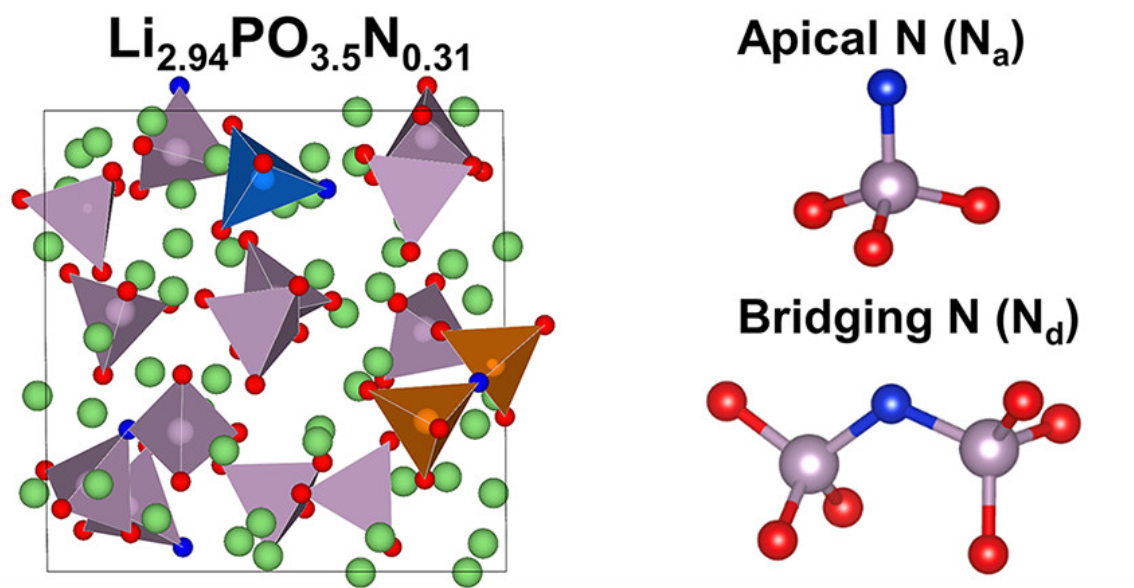Amorphous solids are important for a variety of applications, including optical (lenses), structural (window glasses, thermal insulation), magnetic (bulk metallic glasses), and art (stained glasses). Recently, amorphous solids have gained prominence in energy applications, such as amorphous Si photovoltaic cells, amorphous Li- Si alloy electrodes in Li-ion batteries, and glassy lithium phosphorus oxy-nitride (LiPON) electrolytes in thin-film batteries for microelectronics. However, more studies are required to understand both the thermodynamic (glass transition temperature – Tg, Kauzmann temperature – TK, structure) and kinetic (dynamic structure factors, self-diffusion) properties of glasses. From a materials-engineering perspective, predicting the ability of a given composition to form an amorphous phase can lead to the identification of new glassy compounds with potentially important applications.
While this research direction will look at a few select systems in the short future, the eventual aim will be to construct a general theoretical framework, and address the question, “Is it feasible for a given composition to form a ‘useful’ glass under practical cooling rates?”.
References
- Lacivita et al., “Resolving the amorphous structure of lithium phosphorus oxynitride (LiPON)”, J. Am. Chem. Soc. 140, 11029-11038 (2018). DoI.
- Sivonxay et al., “The lithiation process and Li diffusion in amorphous SiO2 and Si from first-principles”, Electrochim. Acta 331, 135344 (2020). DoI.
- Xia and Carter, “Orbital-free density functional theory study of amorphous Li-Si alloys and introduction of a simple density decomposition formalism”, Modelling Simul. Mater. Sci. Eng. 24, 035014 (2016). DoI.
